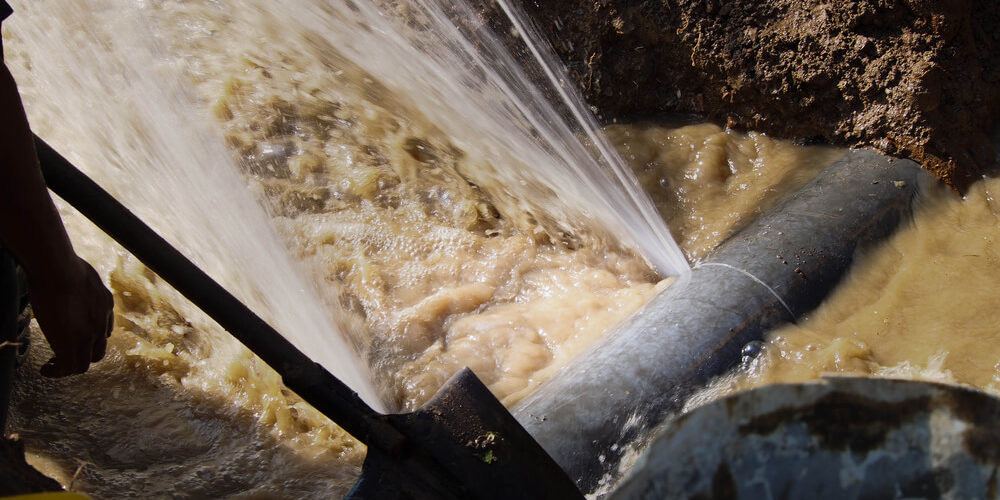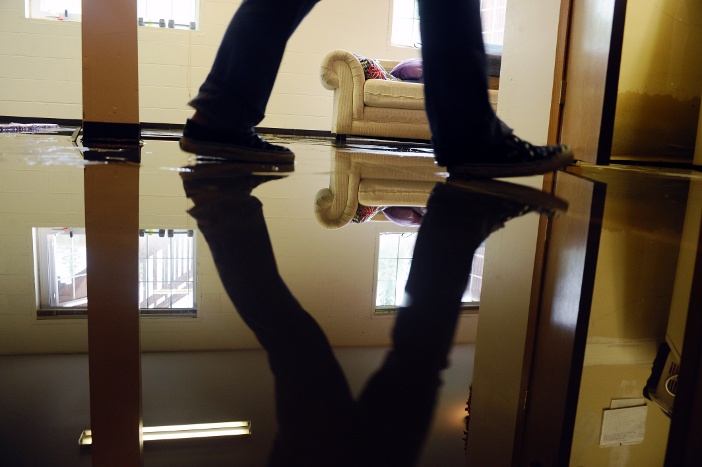Everything Homeowners Need to Know About Septic Tank Maintenance
Everything Homeowners Need to Know About Septic Tank Maintenance
Blog Article
Just about every person maintains their personal assumption on the subject of Quick Tips To Help Deal With Water Damage.

What should you do if a water pipe bursts in your house? Do you want a mini-waterfall and flooding in an area of your residence? If you find yourself in this scenario, you have to act quickly. The longer you wait, the much more severe the damage that can take place to your building. The clearheadedness is type in these events. For these reasons, you need to find out just how to act in case of a burst water pipe. Since time is of the essence, check out the adhering to suggestions listed below to aid you act quickly.
Turn off the Main Waterline Shutoff
Look for the neighborhood shut-off valve to transform off the water in one specific location only. If you don't recognize where the localized shut-off shutoff is, go for the main water line shutoff and turn it off. Generally, the main shutoff is found outside the house following to the water meter.
Call Water Damage Repair Pros for Help
After shutting the water resource, call the professionals for assistance. This situation is not something you can do some DIY due to the fact that the pipelines required to be fixed and there is a need to deal with the other problems to your residential property. Look for aid from a trustworthy firm offering 24/7 emergency solutions if you can not deal. With their specialist help, you can avoid a lot bigger water damages including warped baseboards, loose ceramic tiles, or harmed frameworks. Do not take this problem lightly as well as seek expert assistance for your total comfort and also a qualified solution.
Paper the Damages For Insurance policy
While you're awaiting the pros to get here, obtain some documents of the damage triggered by the wayward pipe. Take photos as well as videos of whatever. Do close-up shots of the damaged areas as well as belongings. Your documentation will act as proof for your home owner's insurance policy. Maintaining positive with this circumstance assists you to file a claim for coverage, which will certainly better sustain you as well as your household to get back on your feet.
Restore Things That Can Be Saved
As soon as you're done taking photos, analyze the damaged things as well as get the most vital ones from the pile. Dry them off in a dry/warm place far from the damaged area and also try to preserve them as high as you can. Drag as much wetness as you can to the material so it can start to dry out.
Start the Drying Refine
Fortunately, the water from your waterlines is currently clean so you do not have to stress regarding sewage system water. The flowing water might have disturbed the dust and also debris in your rugs and floorboards. Blot out as much water as you can from the surfaces with old towels.
Experts are the only people qualified to examine appropriately and also fix the burs pipes and subsequent damage. They typically provide quiet red flags like gurgling paint, water discolorations.
What should you do if a water pipeline ruptureds in your residence? For these factors, you need to learn how to act in the event of a burst water pipe. After shutting the water source, call the experts for assistance. With their professional assistance, you can stop a lot bigger water damage including distorted baseboards, loose ceramic tiles, or harmed frameworks. The good news is, the water from your waterlines is already clean so you don't have to worry about sewer water.
How to Handle a Burst Pipe and Minimize Damage
Steps to Take Ahead of Time
If you own property in an area that experiences cold weather, you need to be aware of seasonal maintenance tasks that will help you protect your property as the weather changes each year. One of the most important steps is to winterize your pipes to ensure they won't freeze or burst when the temperature drops. This includes action items like insulating any exposed pipes, detaching garden hoses and covering outdoor faucets. If the weather gets cold enough, you may even consider leaving a faucet dripping or opening cabinet doors during the coldest parts of the day.
No matter how prepared you might be, accidents and emergencies still happen. You'd be wise to set up a savings account specifically for your property so you have a "rainy day" fund set aside for unexpected expenses. All homes—regardless of age, location or condition—will inevitably need some form of emergency repair.
Steps to Take for Frozen Pipes
A frozen pipe will not necessarily burst, so if you can catch a frozen pipe early on, you could save yourself a major headache. When your area experiences frigid temperatures, be sure to check your plumbing and keep an eye out for warning signs like faucets only releasing small amounts of water or toilets not refilling when flushed. If you do run into one of these issues, you're likely dealing with a frozen pipe.
If this happens, your first step should be to cut off the water supply to that section of the plumbing. Expanding and freezing water can quickly cause damage. Even if the water supply is shut off, you will likely still deal with some leaking from the water that defrosts after the pipe has thawed. Be prepared with a mop, bucket and/or towels to quickly soak up any excess water.
In order to thaw a frozen pipe, you can use a space heater, infrared or incandescent heat lamp, or even a hairdryer to warm up the frozen area. Heat tape is also an option and should be used according to manufacturer instructions. Do not use any sort of open flame to thaw frozen pipes, as it poses a major fire hazard and can damage your pipes further.
Steps to Take for a Burst Pipe
Water damage claims are the second most common insurance claim in the U.S. When you're dealing with a frozen pipe, the water continues to expand as it freezes, which creates pressure that can cause a pipe to burst. When this happens, the crack or leak in the pipe allows water flow from the pipe to enter your home where it shouldn't. If a pipe does burst, you need to act quickly to mitigate property damage and repair cost.
Your very first step should be to shut off your main water supply to minimize flooding—typically the most expensive damage to address. Once you've shut off the water supply, make sure you identify the entire area that has been impacted by the leak. Remove as much water as possible—as quickly as possible—using a mop, sponges, towels or a shop vacuum or wet/dry vacuum. To prevent long-term damage due to moisture build-up, run a dehumidifier or fan in the affected area. Contact a licensed plumber to ensure the pipe is correctly repaired before running any water to that section of the home again. Burst pipes and the associated water damage are something you absolutely want to avoid as a property owner. If you've had to learn your lesson the hard way, don't let yourself get caught in a similar situation during the next spell of cold weather. The best way to deal with frozen or burst pipes is to prevent them in the first place—proactive winter maintenance will save you time, money and a whole lot of stress.

We were made aware of that write-up about Water Damage Restoration Do’s And Don’t through someone on our other web page. Sharing is caring. You won't know, you will be helping someone out. We take joy in reading our article about The Do’s And Don’ts When Water Floods Your Home.
Report this page